In the early and mid 1970s, hundreds of dory fishermen set off from Pacific City in a quest that generously produced fishing legends. Ray Monroe had been there then, alongside his father and grandfather. As a young man, Monroe was one of the 300 or so commercially licensed salmon fishermen sailing dory boats out of Pacific City to harvest the bounty for which the Oregon Coast is renown. The old salts recount stories of making thousands of dollars in a single haul, full of fish, prized for its fight, profit and taste.
Today, only a few of the couple of hundred commercial salmon fishermen brave the seas in wooden seventeen-foot dories—their numbers thinned by the disappearance of wild Chinook salmon on the Oregon Coast.
In late October, Monroe yearned to see the return of the shimmering bright fall Chinook salmon tugging his lines at the mouth of the Chetco River, skipping over the waves and landing in the hold of Mongo, the tiny aging wooden boat. This year promised to be a good one.
Below the surface, however, the fate of this otherwise sustainable Oregon industry has become closely linked to the disastrous politics in the region’s main salmon habitat— the Klamath River Basin.
Well before sunrise, Monroe set out to sea from the southern Oregon Coast, trolling the ocean for its prize. The dory bobbed through uneven chop of six-foot swells off the coast. The promise of big, fat, silver Chinook salmon was on his mind. Monroe’s fishing buddy, Craig Wenrick, and his son, Dane, trolled just a bit behind in Sea-Q. Monroe had convinced Wenrick to join him in Brookings, where he hoped big Chinook would be running north from the fresh water of the Klamath and Sacramento rivers. 
Hook-and-line fishermen the dorymen are. Their boats tentacled with two long oxidized steel poles that jut twenty feet over the sides. Fishing lines run out to pulleys and to hooks baited with smelt. Lead sinkers pull the lines to depths of perhaps thirty to forty feet, depending on the contour of the ocean bottom. Monroe’s focus is there, at the end of the line, visualizing the action of the bait in the water and teasing the fish that had always been there for him.
Dorymen began fishing the Oregon Coast almost a hundred years ago, mostly putting in from Pacific City. The earliest fishing dories in America, Swampscott dories, were built in and launched from fishing villages in New England in the mid-nineteenth century. These had flat bottoms and rounded hulls, sharply pointed at the bow to cut through the shoreline break. With the exception of motors, today’s dory looks similar to its ancestors.
By 7:00, the sun lit the morning and dimmed the outlook for success in fishing for the shade-loving salmon. On this October day outside of Brookings, Monroe could visualize the fish on his line, but his lines realized nothing—not even the scratch of a nibble. Over the course of a few days fishing out of Brookings, Monroe indeed landed a few fish. At about $6.50 a pound for the two fifteen- to twenty-pounders he caught, he still lost money.
This was not the outcome he had imagined. This year was supposed to be better than the prior disappointing years, according to the fishery managers.
Could numbers lie? In May of 2011, more than double the ten-year average number of adult Chinook salmon surged past the fish counters at the Bonneville Dam on the Columbia River, guaranteeing a good year for Washington fisheries in the path of the salmon’s northerly ocean route. Fishery managers with the Pacific Fisheries Management Council also talked of a rebound of Oregon Coast Chinook.
“They’re back!” declared Tillamook Bay Boathouse owner Darus Peake as the season began.
KLAMATH’S ROLE
The Chinook is the largest of the salmon species in the Pacific Ocean. Its journey is an epic circle. The bulk of the wild ocean Chinook along the southern Oregon Coast typically comes from the Klamath and Sacramento river systems in California. The Klamath River was once the third most productive salmon river in the United States. It starts its journey in the southern Oregon Cascades and stretches 263 miles through Northern California and past a series of four dams, owned by Portland- based utility, PacificCorp.
Before any salmon takes the bait of a doryman on the southern Oregon Coast, it likely begins its journey as fry in the inland freshwater environment of the Klamath River. Here, it will live a year as a juvenile smolt. In this phase, its body chemistry changes, allowing it to live in salt water before swimming out to the ocean to earn its adulthood. Instinctively, these fish swim north from the mouth of the river and often range for hundreds of miles before retracing their paths back upstream to their freshwater birthplace to reproduce.
SOMETHING FISHY
In 2002, a politicized Bureau of Reclamation team under the Department of the Interior made an unusually bold move in overstepping the recommendations from the National Marine Fisheries Service’s boots on the ground in the basin. They enacted a plan to divert a greater amount of water from the Klamath River to nearby farms in a drought year. This gambit favored farms over fish in a decision with long-term implications. Within months, the river became a cesspool of rotting salmon. Some reports of this action say as many as 77,000 salmon were killed. The recovery from this disaster lingers.
In the ensuing years, the number of Chinook landed off the Oregon Coast plummeted from the nearly 330,000 in 2003 to 1,100 in 2009. Official federal disasters were declared in four of the past five years.
That event was the pinnacle of the Klamath River Basin as a political football. In 2003, the Wall Street Journal noted that White House adviser Karl Rove called a meeting with fifty top managers at the US Department of Interior. “Flashing color slides,” the article said, “[Rove] spoke of poll results, critical constituencies— and water levels in the Klamath River basin.” The piece alleges that, here, Rove was able to use his political influence to overturn years of delicate water management policy based on science as a re-election favor for the struggling campaign of Oregon Sen. Gordon Smith.
There was also the highly publicized role of Vice President Dick Cheney. An investigation by the Washington Post in a June 27, 2007 article entitled, “Leaving No Tracks” laid the blame for “the largest fish kill the West had ever seen” at the feet of Vice President Cheney. In effect, Cheney, the Washington Post wrote, undermined environmental policies to reward regional political interests in the tightly contested state of Oregon. Neither Cheney nor Rove would comment for either article.
“Law and science seemed to be on the side of the fish,” the Post’s Jo Becker and Martin Gellman wrote. “Then the vice president stepped in. First Cheney looked for a way around the law, aides said. Next he set in motion a process to challenge the science protecting the fish, according to a former Oregon congressman who lobbied for the farmers. Because of Cheney’s intervention, the government subverted its policy and let the water flow in time to supplement the 2002 growing season, declaring that there was no threat to the fish. What followed was the largest fish kill the West had ever seen, with tens of thousands of salmon rotting on the banks of the Klamath River.”
An otherwise circumspect former National Oceanic and Atmospheric Administration fisheries biologist, Michael Kelly, who was then the lead biologist for the Klamath River Basin, railed against this political meddling in fish management. He would become the whistle-blower detailing how the Bureau of Reclamation and NOAA had ignored science to appease political interests. Kelly’s resignation letter documents his outrage. “… it appears that this agency, and others under the current (2004) administration, routinely abuse the science by giving inappropriately high significance to very small amounts of scientific uncertainty, if that uncertainty supports a desired outcome. Not only does this lack of caution and misuse of science adversely impact natural resources, it misleads the American public about how science and the scientific method work.” Kelly’s resignation letter from 2004 is posted on the Union of Concerned Scientists website.
Sean Stevens from the Portland-based conservation group, Oregon Wild, said, “The short story is that the Klamath has been run for political purposes for far too long while the fish, river and national wildlife refuges suffered. Cheney and Rove getting involved in election year water-rigging was perhaps the apex of politics harming the basin’s resources.” 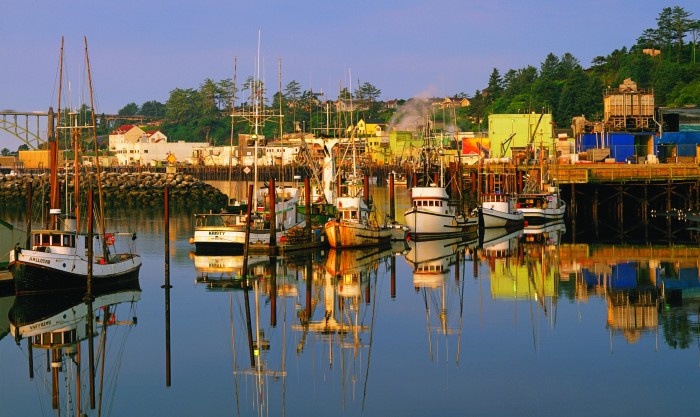
As the 2011 fishing season came to an end, it was clear the numbers would be well short of forecast. Fishery managers with the Pacific Fisheries Management Council predicted a catch of about 62,000 for 2011, but reality was less than half of that at about 25,000. The Pacific Fisheries Management Council (PFMC) is the federal government agency that regulates salmon fishing and other species in federal waters off the West Coast. The PFMC said it was surprised by this year’s shortfall and was at a loss to pin down specific reasons.
THE NEXT DORYMEN
After the 2002 kill-off, the PFMC designated the Sacramento and Klamath River Chinook as “weak” populations in Oregon and California. Under that designation, the PFMC manages this species to achieve as much adult salmon river return and spawning as possible. This planning helps rebuild the critical stocks by natural means. Until that population rebounds, however, Oregon’s commercial salmon fishermen worry they’re being regulated out of business.
For career multigenerational fishermen like Monroe and Wenrick, the frustration mounts. “If the goal is to have fish for people to catch,” said Monroe, “they’re not getting there very fast.” The 54-year-old fisherman is also resentful for having to take time away from work to argue with staff from PFMC, who are paid to be at these meetings.
“The fishermen bring new dollars to the economy,” said Roy Schiewe, owner of Schiewe Marine Supply in Newport, Oregon. “Each fish landed is a new dollar. The message from the fishing fleet is that fishermen don’t want to catch the last fish.”
At time of publication, the Oregon Salmon Commission had just finalized paperwork and a letter to Governor Kitzhaber imploring him to apply for federal disaster aid. Ultimately, that request has to come from the Governor’s office and then be taken to the federal government by the congressional delegation. Nancy Fitzpatrick of the Oregon Salmon Commission has asked for such a declaration before. Even with such a declaration, Fitzpatrick isn’t sure what impact it might have. Those fishermen who do qualify for disaster funds, usually find that the remuneration is just enough to hold off creditors from the prior season and hope for a banner year next season. “Disaster funding is no substitute for getting more salmon in the ocean so these fishermen can make a living doing what they do best,” said Tom Towslee, a spokesman from Sen. Ron Wyden’s office.
On the whole, Sen. Wyden has led environmental issues in Oregon that protect critical salmon spawning habitat, such as advocating for Wild and Scenic designations for the Rogue, Mollala and Chetco rivers. Finding federal disaster funds in a fiscally conservative environment however, will be a difficult feat, even for a senior member of the Senate Finance Committee.
While the politics continue to play out, dorymen do what they can to get by, awaiting the return of the Chinook. Monroe can no longer support his family on Chinook, alone. He melds farmer and fisher as he works with the Tillamook Soil and Water Conservation District, advising dairy farmers how to help keep streams clean. Clean rivers, of course, provide for healthy salmon runs and Monroe’s other occupation.
Other fishermen, such as Henry De Ronden-Pos, go after the more abundant tuna. Former fisherman Mike Donovan and his wife, Vanessa, operate a seafood restaurant in Newport, the Ocean Bleu, 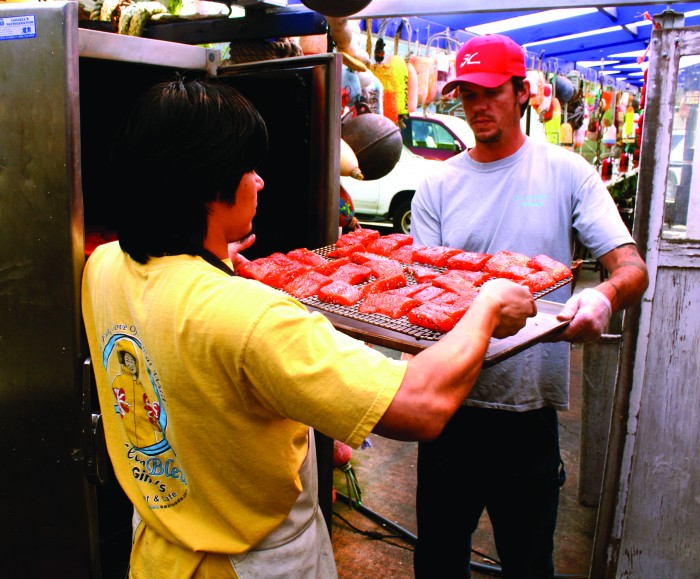
Oregonians are losing part of their soul, said Fitzpatrick, from the salmon commission. “We can’t keep saying maybe it will be better next year.”
The next generation of dorymen face supply issues that may sink the fleet. With the lack of younger fishermen coming into the industry, the average age for a dory boat fisherman is now 53.
Fishermen gathered around dinner in Brookings and looked over 24-year-old Dane Wenrick, urging him to continue his education, graduate with a degree and have a profession to fall back on. As the younger Wenrick sat among the old salts, listening to the sea stories of the bounty of the old days, he mused, “I wonder if I’ll ever see it, or will I just hear stories?”


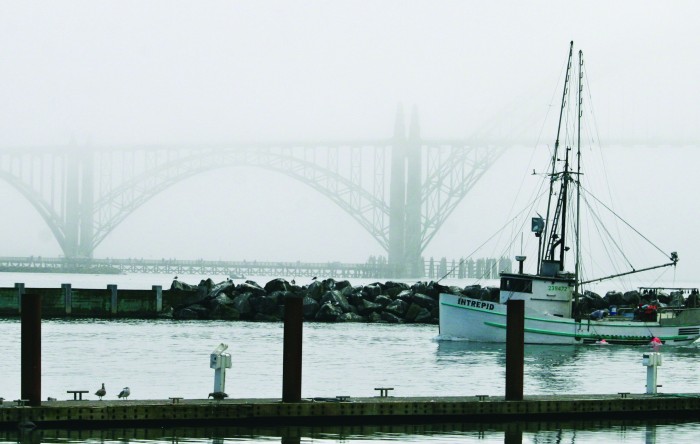


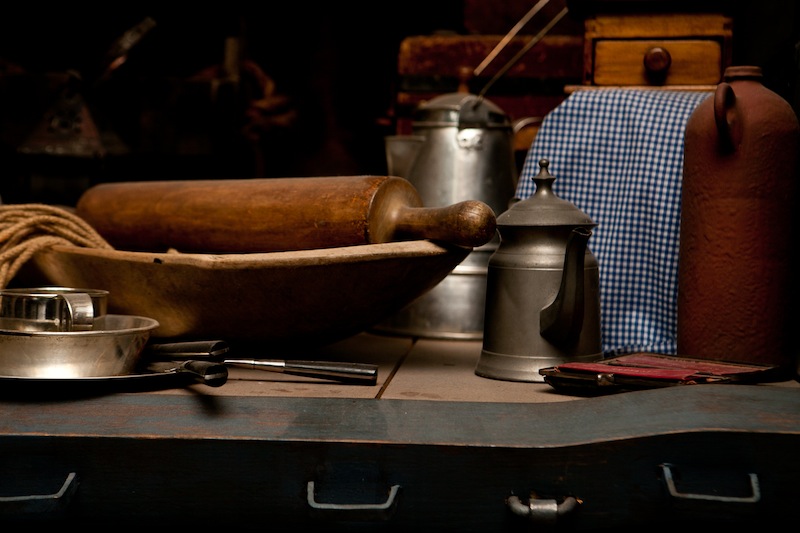
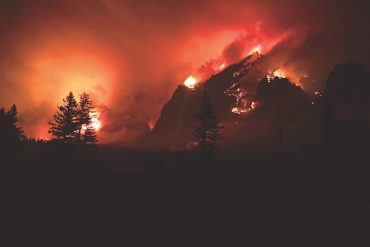



This article and photos needed a lot more fact checking. Firstly, the photo of a boat is not a dory, nor is it located in Pacific City. Whoever wrote this article has obviously not been to Pacific City or seen a PC Dory. Sorry to be harsh, but its just painfully bad. Secondly, there is really no connection to the Pacific City dory fleet and the salmon fishery issues of the Klamath or any river in southern Oregon for that matter. The dory fleet is based out of PC. Fisherman out of southern Oregon have ports, thus they dont need Dorys.
ya its newport
I live in Pacific City, the first photo you show looks like Newport. Our bridge is Not so magnificent. Love the article thoughRPa.
this was intresting